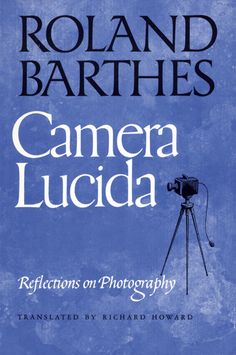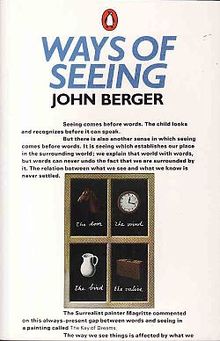Photographs: Essential Readings
For an enthusiast of photographic images, the breadth of the reading material can be overwhelming. This is why here we have a few photography theory books which should be equally enriching and enthralling. Each of these books generates discussion and thought on the scope and very nature of the medium.

Susan Sontag, On Photography
An American writer, filmmaker, philosopher, teacher, and political activist, Susan Sontag is a singular phenomenon and an icon of American culture criticism. She is remembered as an author of inquisitive, analytical, fearlessly outspoken essays, but also short stories which dealt with those ideas and preoccupations she couldn't address in essay form.
In the book, Sontag expresses her views on the history and present-day role of photography in capitalist societies as of the 1970s. Sontag discusses many examples of modern photography. Among these, she contrasts Diane Arbus's work with that of Depression-era documentary photography commissioned by the Farm Security Administration.
She also explores the history of American photography in relation to the idealistic notions of America put forth by Walt Whitman and traces these ideas through to the increasingly cynical aesthetic notions of the 1970s, particularly in relation to Arbus and Andy Warhol.
Sontag argues that the proliferation of photographic images had begun to establish within people a "chronic voyeuristic relation" to the world around them. Among the consequences of photography is that the meaning of all events is leveled and made equal. This idea did not originate with Sontag, who often synthesized European cultural thinkers with her particular eye toward the United States.
As she argues, perhaps originally with regard to photography, the medium fostered an attitude of anti-intervention. Sontag says that the individual who seeks to record cannot intervene, and that the person who intervenes cannot then faithfully record, for the two aims contradict each other. In this context, she discusses in some depth the relationship of photography to politics.
This book, a compelling and deep exploration of photography and its position in contemporary culture, still serves as an entry point into the nebulous world of photographic theory books for a great many readers.

Roland Barthes, Camera Lucida, Reflections on Photography
A French literary theorist, philosopher, linguist, critic, and semiotician, Roland Barthes explored a diverse range of fields, influencing the development of many schools of theory, including structuralism, semiotics, social theory, design theory, anthropology, and post-structuralism. “I have tried to define things, not words,” he once said.
Camera Lucida (French: La chambre claire) is a short book published in 1980 by Roland Barthes. It is simultaneously an inquiry into the nature and essence of photography and a eulogy to Barthes' late mother. The book investigates the effects of photography on the spectator (as distinct from the photographer, and also from the object photographed, which Barthes calls the "spectrum").
In a deeply personal discussion of the lasting emotional effect of certain photographs, Barthes considers photography as asymbolic, irreducible to the codes of language or culture, acting on the body as much as on the mind. The book develops the twin concepts of studium and punctum: studium denoting the cultural, linguistic, and political interpretation of a photograph, punctum denoting the wounding, personally touching detail which establishes a direct relationship with the object or person within it.
Camera Lucida, along with Susan Sontag's On Photography, was one of the most important early academic books of criticism and theorization on photography. Neither writer was a photographer, however, and both works have been much criticised since the 1990s.

John Berger, Ways of Seeing
John Berger was born in London in 1926. He is well known for his novels and stories as well as for his works of nonfiction, including several volumes of art criticism. His first novel, A Painter of Our Time, was published in 1958, and since then his books have included Ways of Seeing, the fiction trilogy Into Their Labours, and the novel G., which won the Booker Prize in 1972. In 1962 he left Britain permanently and moved to a small village in the French Alps. He died in 2017.
John Berger’s Ways of Seeing is one of the most stimulating and the most influential books on art in any language. First published in 1972, it was based on the BBC television series about which the Sunday Times critic commented: “This is an eye-opener in more ways than one: by concentrating on how we look at paintings . . . he will almost certainly change the way you look at pictures.” By now he has.
Some other materials, equally interesting for a teacher and a student of photography, with some linked extracts are here:
Visual Analysis:
Robert Frank: The photographer in the Beat/Hipster Idiom
America & Lewis Hine: Photographs 1904-1940
Introduction text to Bellocq: Photographs from Storyville
Helen Levitt: An American Century of Photography: From Dry-Plate to Digital
Peter Fraser: Eventually, Everything, Connects
Photography Theory:
John Szarkowski: introduction to 'William Eggleston's Guide' 1976
Susan Sontag: an excerpt from 'On Photography' 1977
Roland Barthes: excerpts from 'Camera Lucida' 1980
John Tagg: from the introduction to 'The Burden of Representation' 1988
Graham Clarke: How do we read a photograph? from 'The Photograph' 1997
Michael Bracewell: 'Peter Fraser photographs 2002-2003'
Fiction:
Italo Calvino: The Adventure of a Photographer
Most of the above text is sourced from: Wikipedia, Elena Martinique at Widewalls, Penguinrandomhouse, and photopedagogy website.
